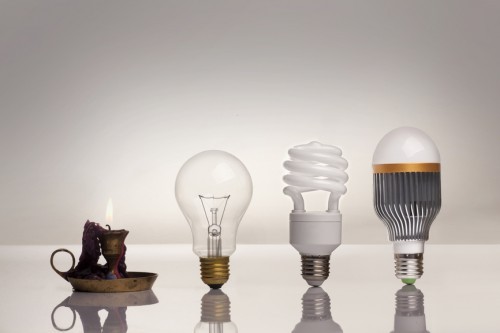 The humble LED light, it doesn't look like a revolutionary bent on world conquest. But that is exactly what these tiny multi-color lights have accomplished. From its humble beginning, LED lighting has changed our world in some remarkable ways.
The humble LED light, it doesn't look like a revolutionary bent on world conquest. But that is exactly what these tiny multi-color lights have accomplished. From its humble beginning, LED lighting has changed our world in some remarkable ways.
Just a few years ago the LED light only lived inside electronic devices. Now light-emitting diodes are everywhere. You will find them in your car headlights, on holiday decorations and providing long lasting, cheap lighting in your home and office. Let's explore the journey these little lights have taken to become an integral part of our lives and see what their future may be.
An Accidental Discovery
The LED came about as the result of one of those unexpected accidents in that up new and better ways to get things done. During early sixties researchers competition was fierce to develop solid state laser technology. Researchers Bob Biard and Gary Pittman began to try using semiconductors and p-n junctions as a means to control lasers. Discovering when they tested the device, they examined it with an infrared detector. Shining brightly, the LED made its very first, accidental, appearance in the fall of 1961.
A Better Way
In the beginning, Edison said “Let there be light.” Then some folks started to wonder if there might not be a better way. Electronics manufacturers had a problem with incandescent indicator lights; they just did not work very well. Fragile, dim and hot, the little bulbs just did not last long.
The year was 1962 and the man with a better way, GE engineer Nick Holonyak. He built the very first light emitting diode that emitted visible light and inadvertently revolutionized the future of lighting. Those early LED lights only emitted infrared or colored light but the stage was set for bigger things. By the 1990s, LEDs could emit visible white light and saw use in a wide range of applications. Now technology for flat screen television and a host of hand-held devices employ LED technology.
Better and Cheaper
The earliest LED lights sold were expensive. Patented by Texas Instruments, they cost over a hundred dollars apiece. IBM bought the infrared LEDs to use in computer punch card readers as a replacement for short lived tungsten incandescent bulbs. By the 1970s the cost of LED lights had dropped dramatically as manufacturers found more uses for the little lights.
By the 1990s, the cost of LED light fell to around ten cents per lumen from the ten dollars per lumen average in the late seventies. New innovations and applications for LED technology are bringing costs down and making LED light better and more efficient. Just as the LED revolutionized lighting and electronics, new technology promises to put display screens anywhere with organic LED light.
OLEDs or organic light-emitting diodes are extremely thin and can be shaped in different ways easily. Light weight, extremely thin and using minuscule amounts of energy, an OLED display can be as small as a cell phone display or as large as a wall for advertising or entertainment purposes.
LED technology has come a long way since its birth in the sixties. The future is brighter because LEDs are lighting the way.
